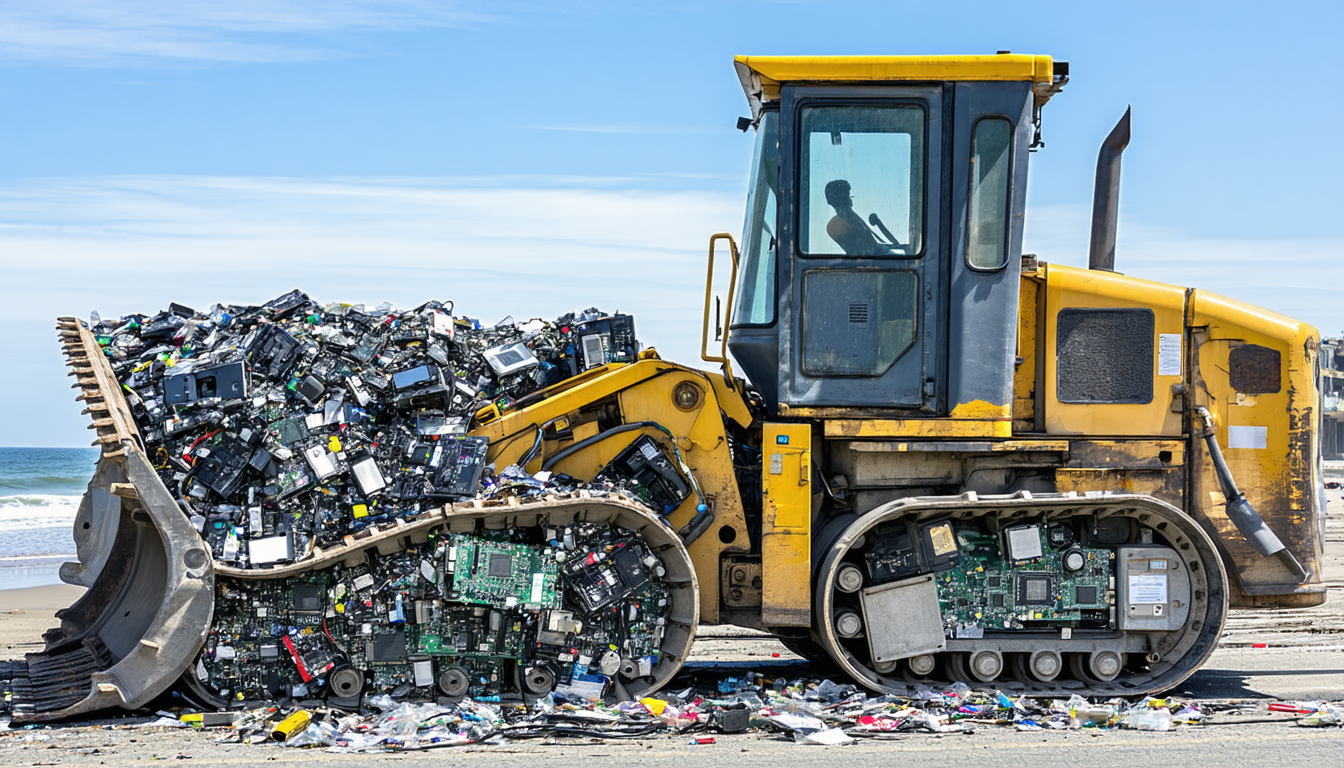Introduction
In Long Beach, California, the growing challenge of electronic waste, or e-waste, has emerged as a pressing environmental concern. As one of the busiest port cities in the United States, Long Beach faces unique challenges with the accumulation of discarded electronics from both residents and industries. This article explores the latest developments in the Long Beach e-waste situation, including new recycling initiatives, community impacts, and expert insights on sustainable solutions. With e-waste posing risks to public health and the environment, understanding and addressing this issue is more critical than ever.
The Scale of Long Beach E-Waste Challenges
Long Beach, home to over 460,000 residents and a major industrial hub, generates significant amounts of e-waste annually. According to a 2022 report by the California Department of Resources Recycling and Recovery (CalRecycle), the state produces over 6 million tons of e-waste each year, with coastal cities like Long Beach contributing a substantial share. Old smartphones, laptops, batteries, and other electronics often end up in landfills, releasing toxic substances like lead and mercury into the soil and water.
The problem is compounded by the city’s role as a logistics center. Imported goods often include electronics that become obsolete quickly, adding to the waste stream. Local authorities have noted a 15% increase in improperly disposed e-waste over the past five years, highlighting the need for better management systems.
Community and Environmental Impacts
The improper handling of e-waste in Long Beach has far-reaching consequences for both residents and ecosystems. Toxic chemicals from discarded electronics can contaminate groundwater, posing health risks such as respiratory issues and neurological damage. Low-income neighborhoods near industrial zones are disproportionately affected, as they often lack access to proper disposal facilities.
Local environmental groups have raised alarms about marine pollution near the Port of Long Beach. “E-waste runoff is a silent threat to our coastal ecosystems,” said Dr. Emily Carter, an environmental scientist at California State University, Long Beach. “Without immediate action, we risk irreversible damage to marine life and water quality.”
Recent Initiatives to Tackle Long Beach E-Waste
In response to these challenges, Long Beach has launched several initiatives to curb e-waste accumulation. In early 2023, the city partnered with CalRecycle to establish monthly e-waste collection events at community centers. These events have already diverted over 50 tons of electronics from landfills, according to city officials.
Additionally, local businesses are stepping up. Tech companies in the area have started buy-back programs to encourage consumers to return old devices for recycling. The city is also exploring stricter regulations on illegal dumping, with fines increasing by 20% for violators since January 2023.
Expert Perspectives on Sustainable Solutions
Experts emphasize that while current efforts are commendable, long-term solutions require innovation and collaboration. “Education is key to changing consumer behavior,” said Mark Thompson, a waste management consultant based in Southern California. “People need to understand the dangers of tossing electronics in regular trash bins and opt for certified recycling centers.”
Thompson also advocates for extended producer responsibility (EPR) laws, which would require manufacturers to manage the end-of-life disposal of their products. Such policies could significantly reduce the burden on municipalities like Long Beach while promoting eco-friendly design in electronics.
Future Implications and Potential Developments
The issue of e-waste in Long Beach reflects a broader national challenge. As technology advances, the volume of obsolete devices will likely continue to grow. Without scalable solutions, cities across the U.S. could face similar environmental and health crises.
On a positive note, advancements in recycling technology offer hope. Innovations like automated sorting systems and chemical-free extraction of precious metals from e-waste could revolutionize disposal practices. If adopted widely, these could position Long Beach as a leader in sustainable waste management.
Conclusion
The escalating e-waste crisis in Long Beach demands urgent attention from residents, businesses, and policymakers alike. While recent initiatives show promise, sustained efforts are needed to protect public health and preserve the environment. By fostering community awareness, enforcing stricter regulations, and embracing cutting-edge technologies, Long Beach can pave the way for effective e-waste management. Addressing this issue now will ensure a cleaner, safer future for generations to come.
Frequently Asked Questions (FAQ)
- What is e-waste, and why is it a problem in Long Beach?
E-waste refers to discarded electronic devices like phones, computers, and batteries. In Long Beach, it poses a problem due to toxic chemicals leaching into the environment and limited disposal infrastructure. - Where can I recycle e-waste in Long Beach?
Residents can participate in monthly collection events hosted by the city or visit certified recycling centers listed on the CalRecycle website. - How can I help reduce e-waste in my community?
Opt for repair over replacement, donate usable devices, and always recycle electronics at designated facilities instead of throwing them away. - What are the health risks associated with e-waste?
Improperly handled e-waste releases toxins like lead and mercury, which can cause respiratory issues, neurological damage, and other health concerns. - Are there penalties for illegal e-waste dumping in Long Beach?
Yes, fines for illegal dumping have increased by 20% since 2023, with penalties varying based on the severity of the violation.

